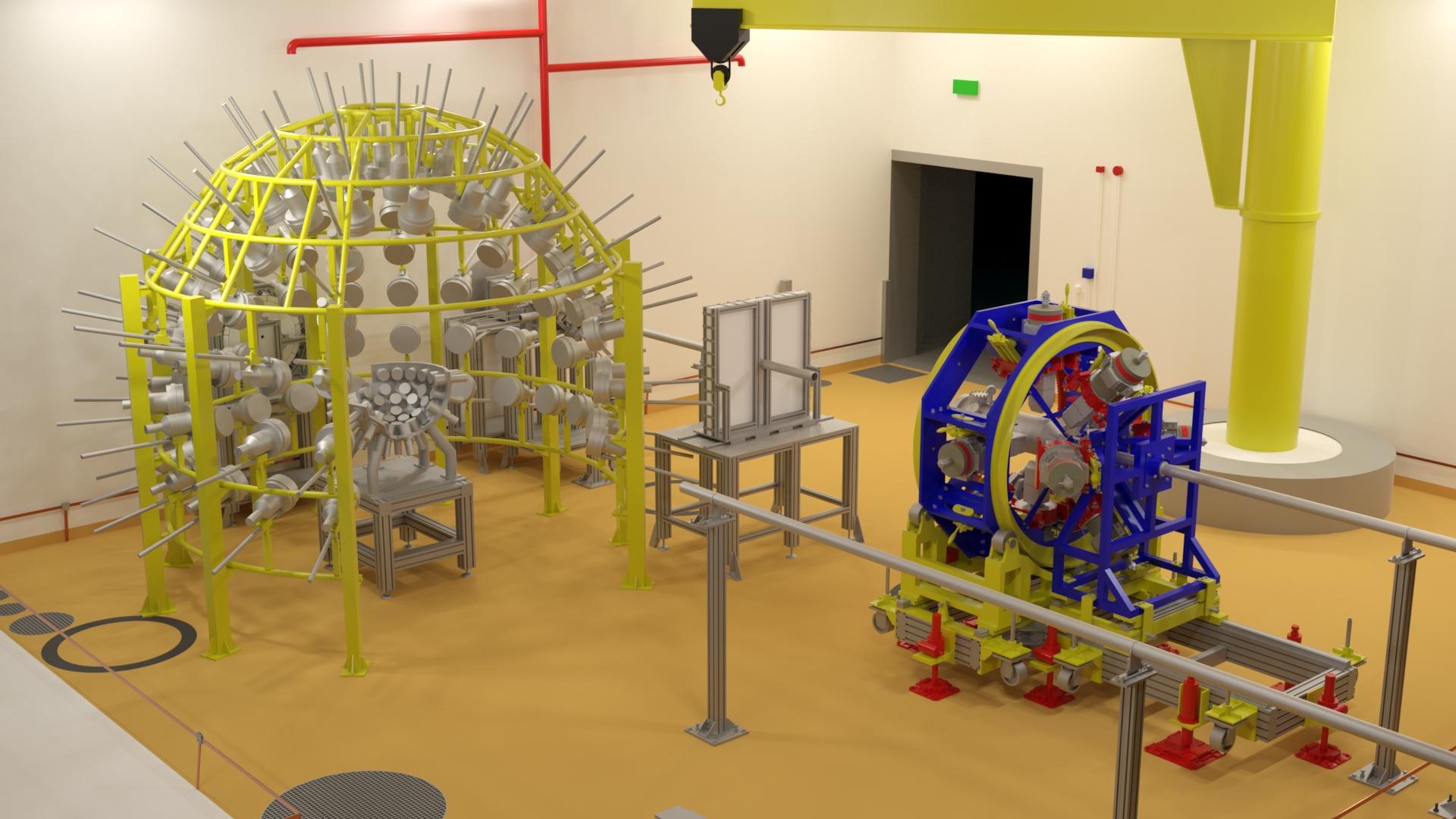The E8 is an experimental hall where experiments could use either low-energy or high-energy gamma beams. One experimental location on both the low and high energy lines is occupied by the ELIADE array while on the high-energy line the remaining space is occupied by the GANT-GN array. There are designated diagnostics stations on both gamma beamlines.
ELIADE
Detection
ELI-BIC
Detection
ELISSA
coverage an end cap detectors assembly consisting of four QQQ3 segmented detectors by Micron Semiconductor Ltd will be used. So that, the final design of ELISSA will ensure very good resolution and granularity in a compact detection system covering almost 80% of the total angular range.
Detection
ELITHGEM
Detection
ETPC
The active volume of the chamber, in which the reaction happens and the decay products are detected, will have a length of 35 cm and a square cross-section of 20 cm × 20 cm, centred around the beam axis with a window for the gamma beam and another on the side for an alpha source.
The multiplication of the drifting electrons will be achieved by a sequence of 35 cm × 20 cm Gas Electron Multiplier (GEM) foils. The charge will be read by a u-v-w readout which is mounted on a circuit board using multi-layering board technology, as shown, and it is formed by three layers of (u-v-w) grids crossed at 60°.
Combination of the 2D position in the collection plane with time information will allow the 3D reconstruction of the reaction products. The 3D reconstruction of events will also allow us to identify reactions in which more than two particles are involved, like 12C(γ,3α), or when more events (including background) happen within a short time-window of the information collection.
Detection
GANT
Detection
IGISOL
Detection
Electronics laboratory
The Electronics laboratory offers several services associated to this specific field of activities such as the maintenance of equipment, repairs, technical support for preparing and performing experiments. The laboratory is equipped with machines that can be used for the measurements of electrical parameters in Physics and applied Electronics at ELI-NP. Therefore the design and development of prototypes (in small quantities), electronics’ modules, adaptors or simple automation devices can be done properly. These activities serve for the research, in general, as well as for supporting the experiments or the utilities present at ELI-NP. The measurements made in this laboratory can be of help when it comes to investigating potential malfunctions on devices that are to be used in experimental set-ups as well as the checkup of homemade system/device.
For the abovementioned activities, we can find the following corresponding devices in the laboratory:
- Oscilloscopes (500MHz, 2.5 Gs/s)
- Signal and Functions generator
- Power supplies
- Welding workstations for THT and SMD components
- Multimeters
- Various probes
- Microscope
- RLC bridges
- Small electronic and electrical components such as resistors, potentiometers, capacitors, transistors, diodes, LEDs, integrated circuits, relays, voltage regulators, buzzers, etc.
- Various cables for power or transmission of data (e.g. coaxial cables)
Mechanical workshop
Mechanical workshop
- Elastic scattering
- Inelastic scattering
- Nuclear resonant scattering
- Other - Engineering & Technology
- TANGO and some softwares
- Binary and ASCII
- To be filled, ROOT file format
